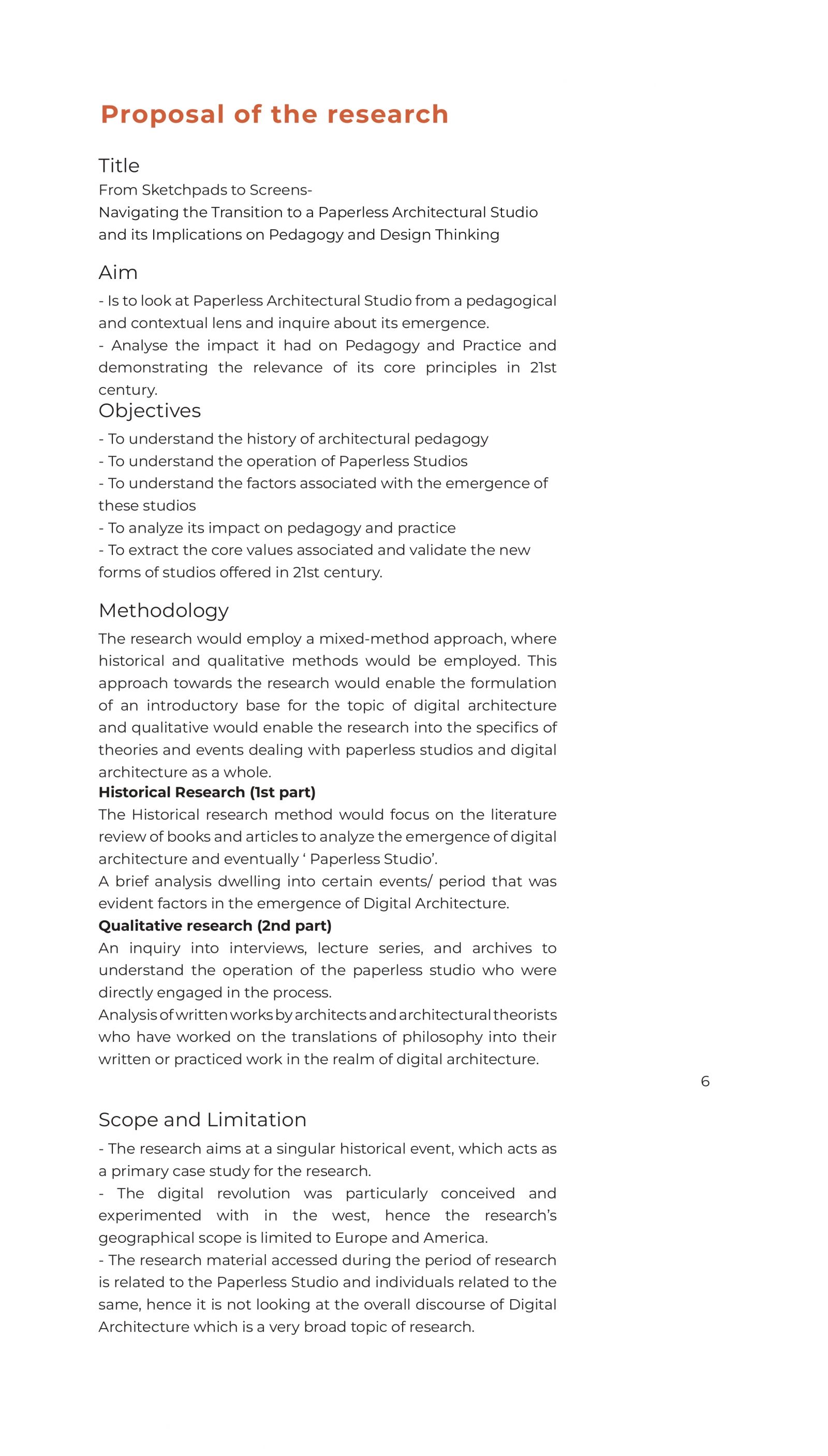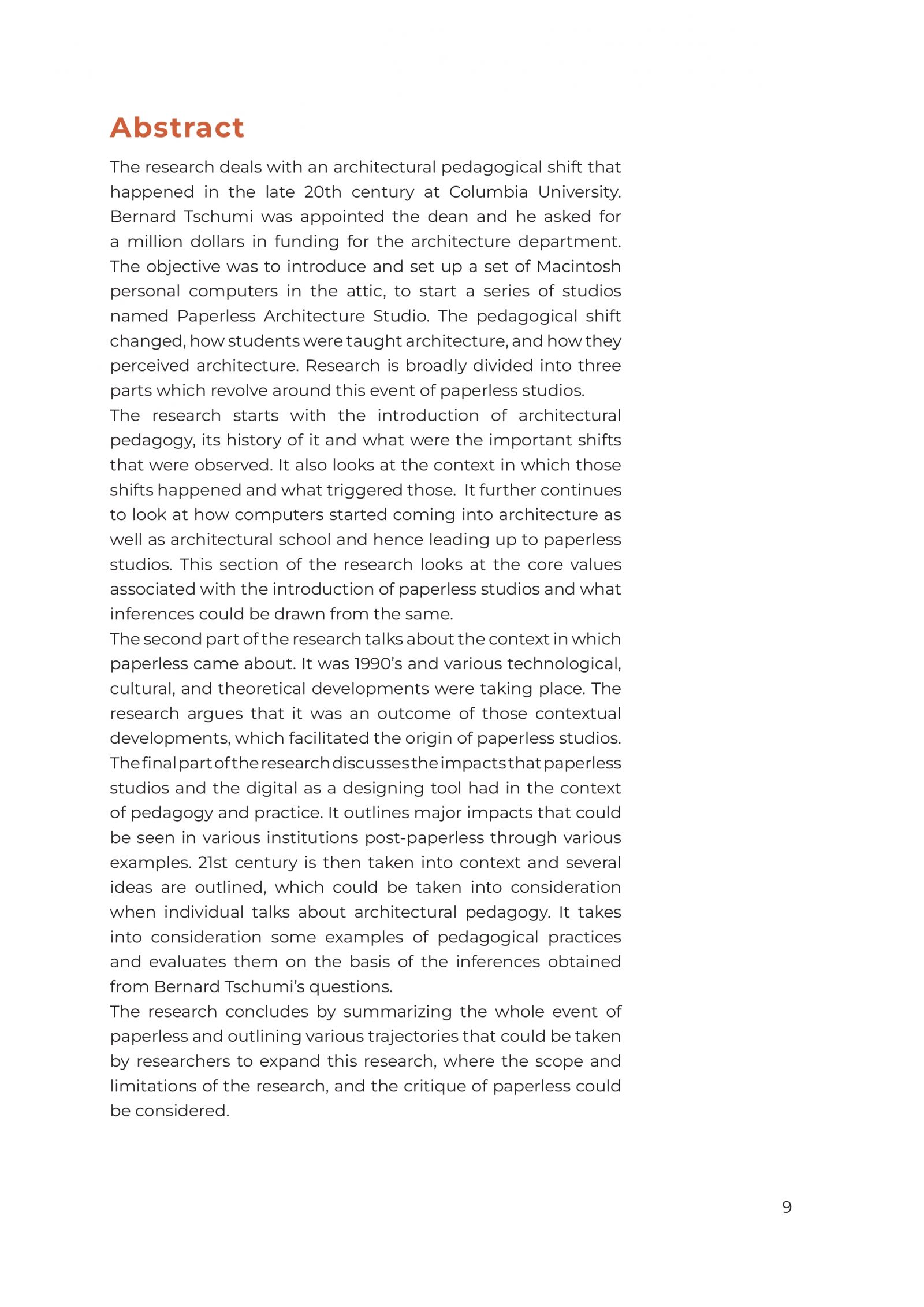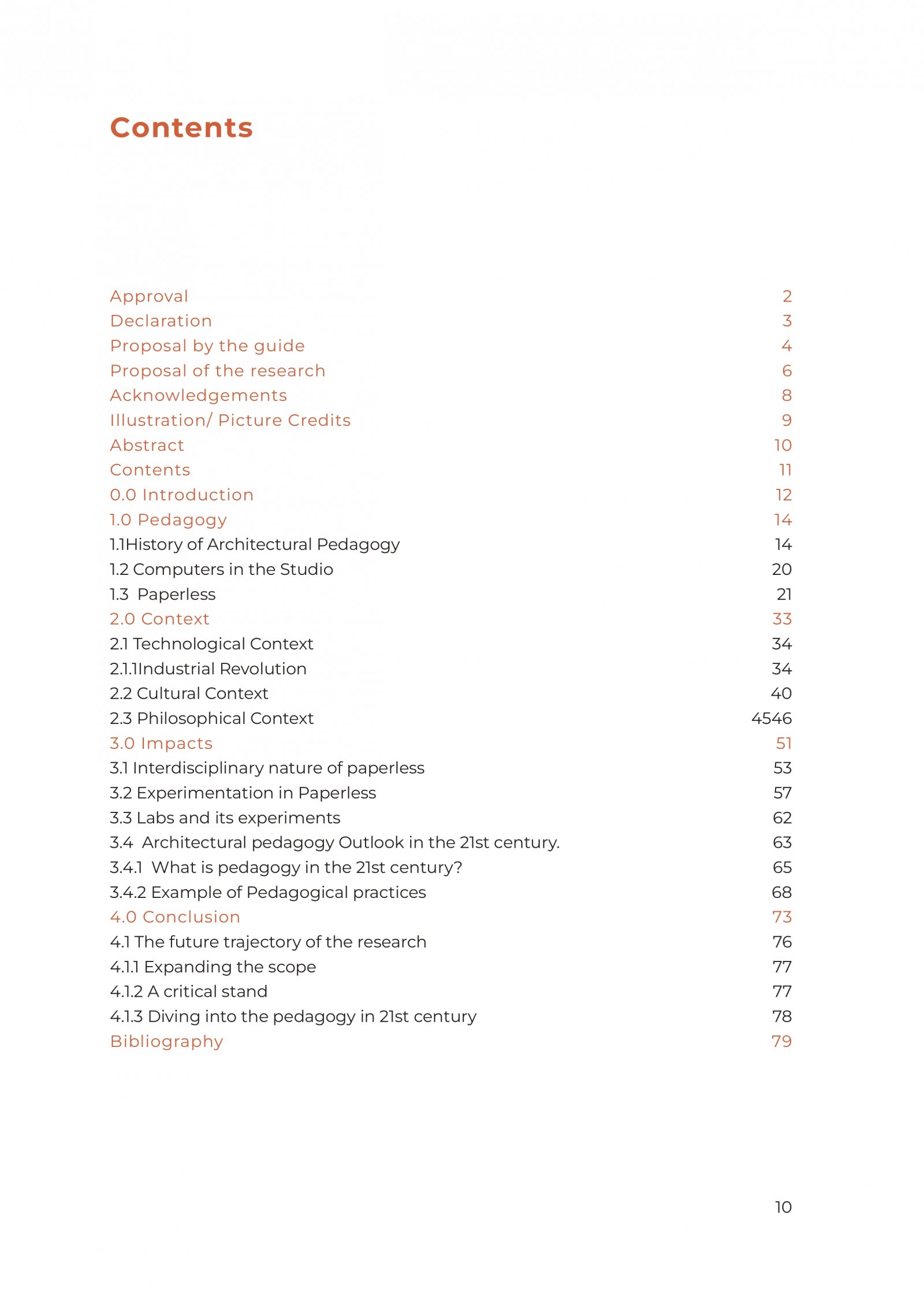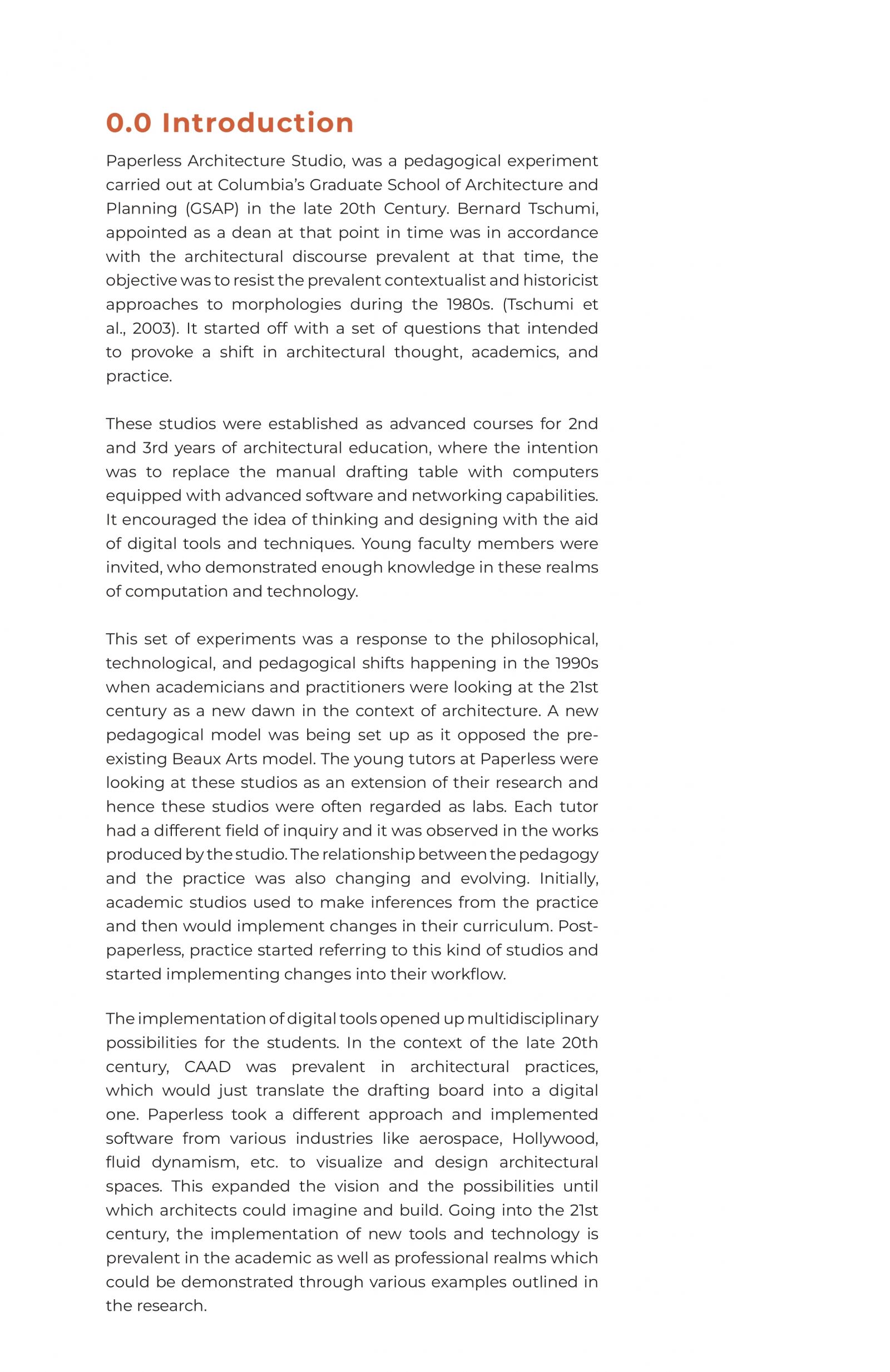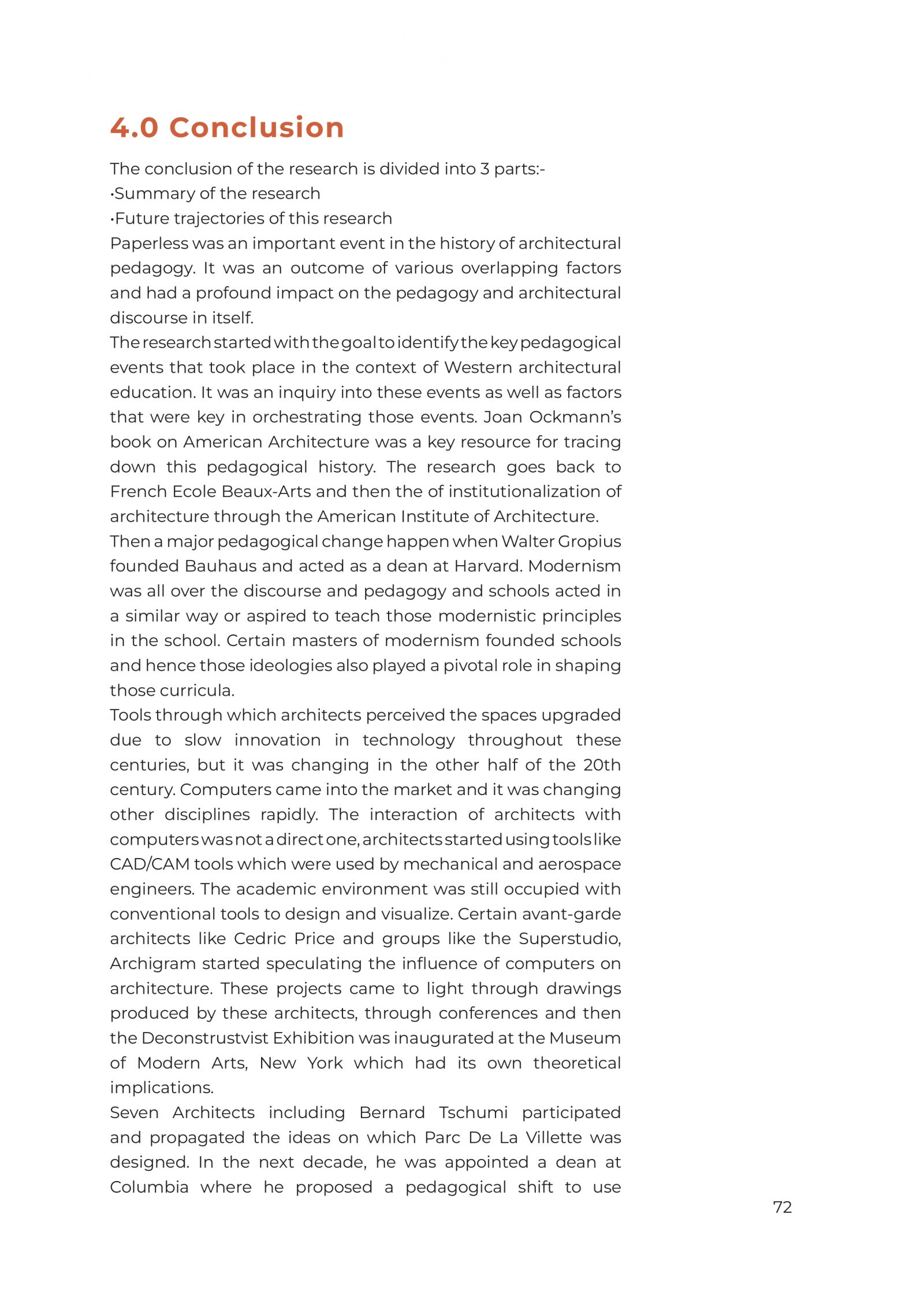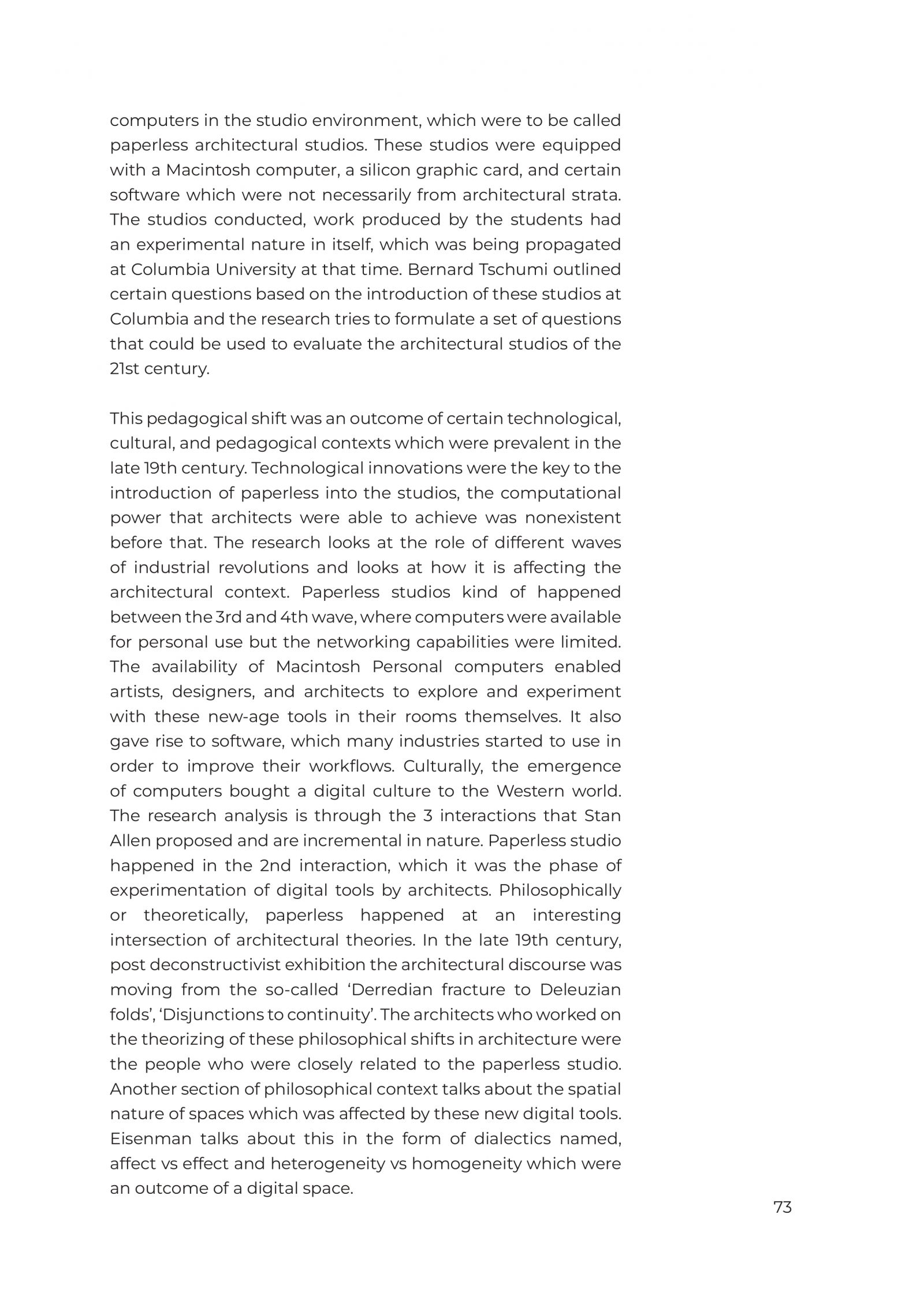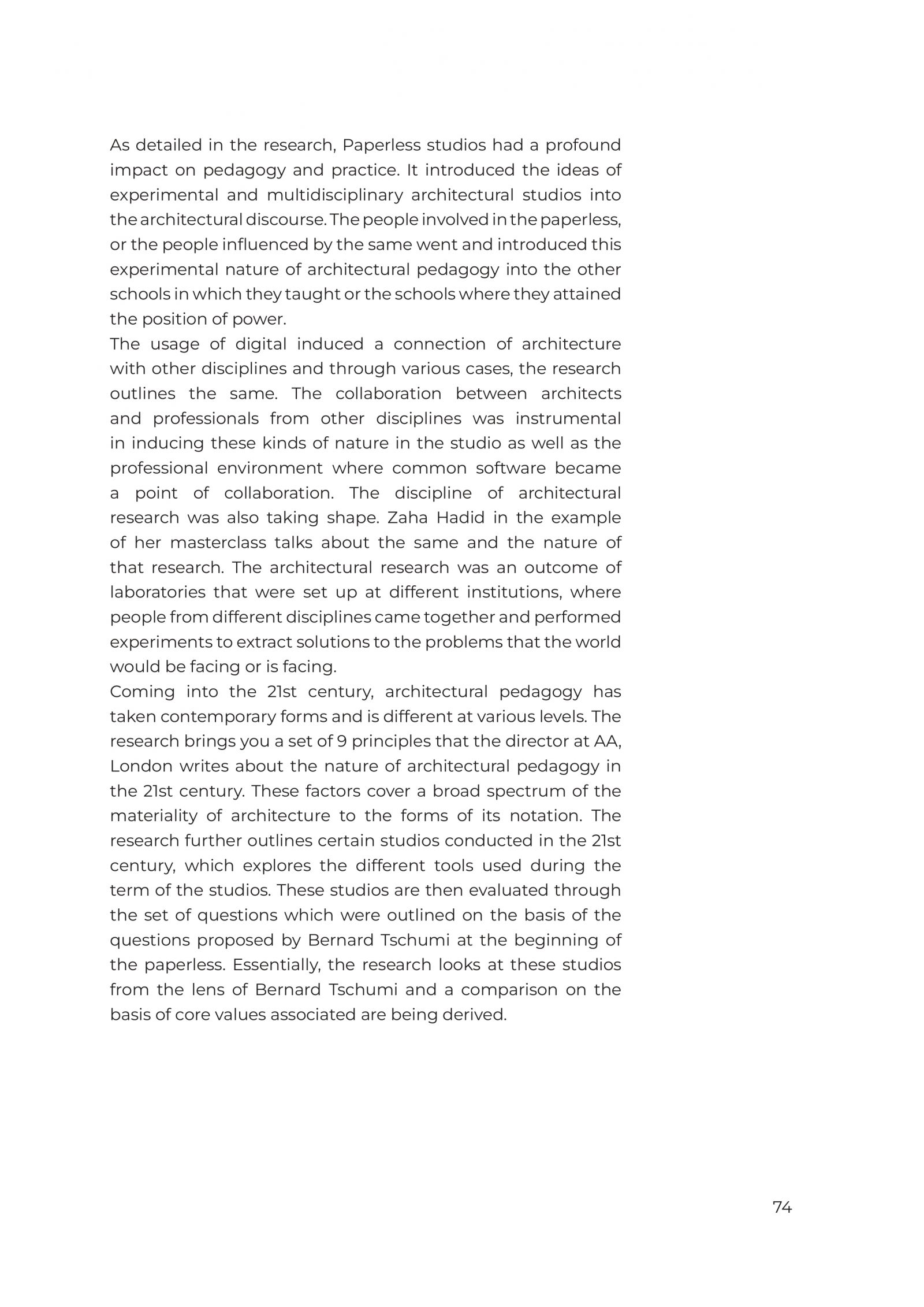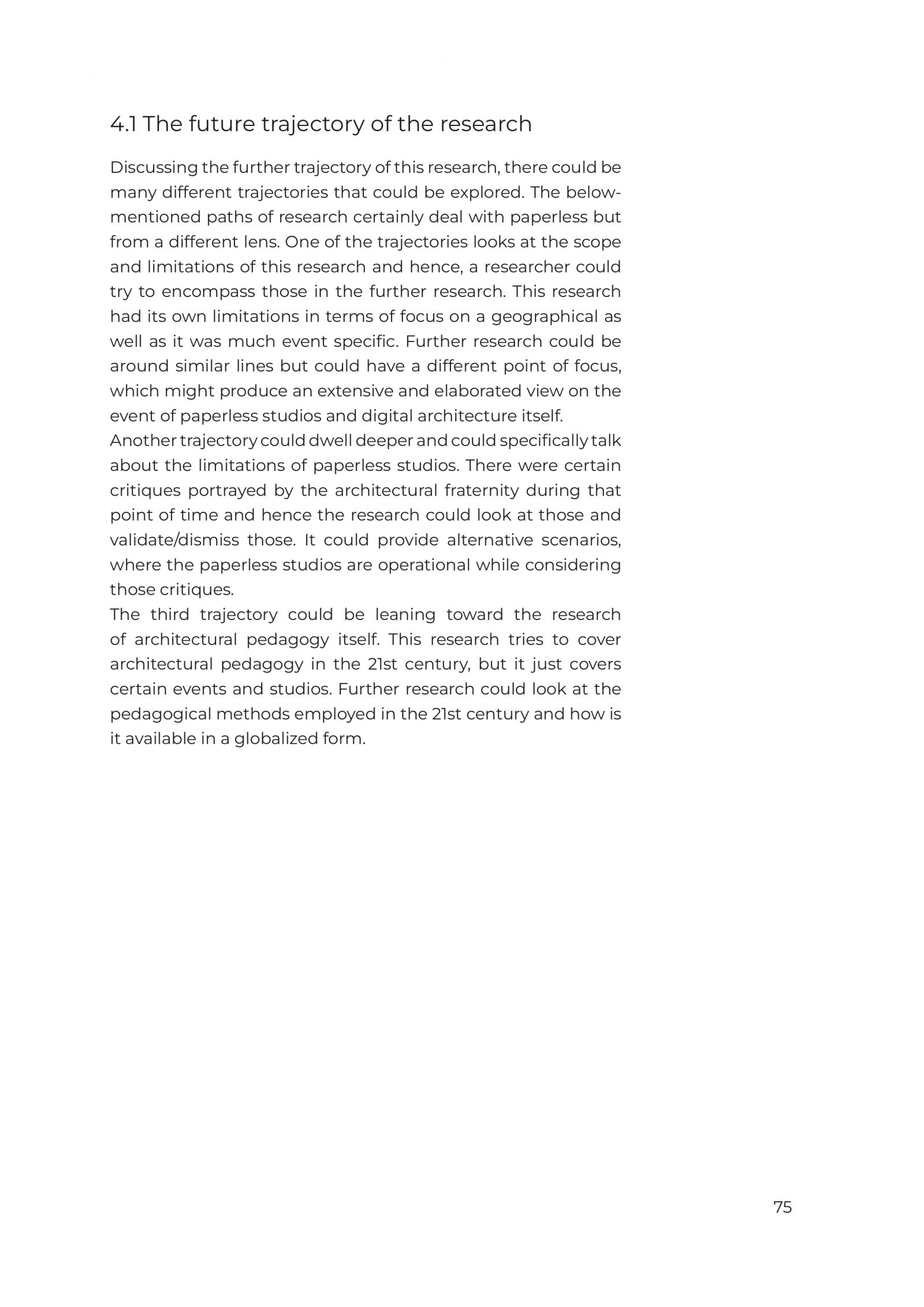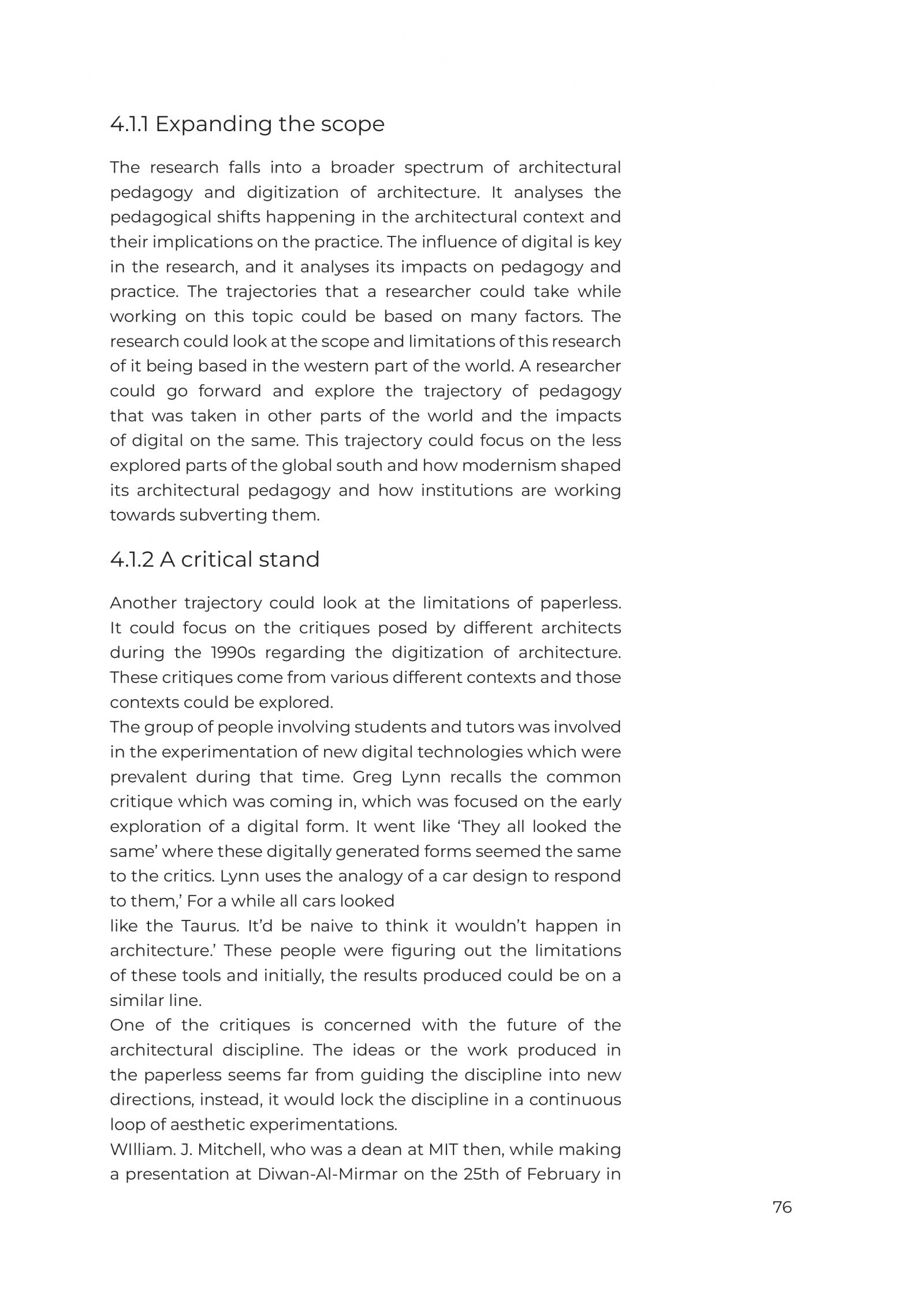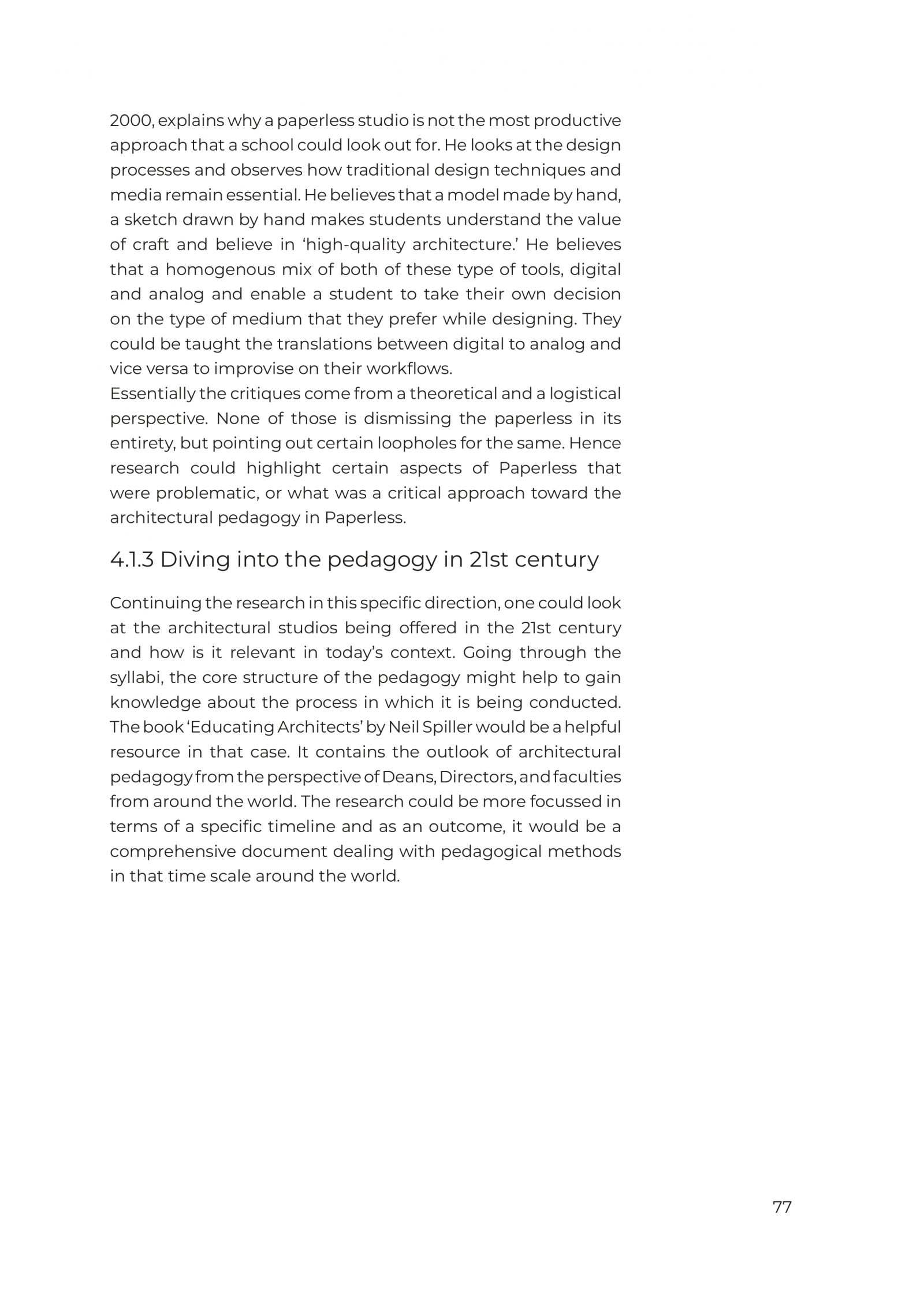Your browser is out-of-date!
For a richer surfing experience on our website, please update your browser. Update my browser now!
For a richer surfing experience on our website, please update your browser. Update my browser now!
The research deals with an architectural pedagogical shift that happened in the late 20th century at Columbia University. Bernard Tschumi was appointed the dean and he asked for a million dollars in funding for the architecture department. The objective was to introduce and set up a set of Macintosh personal computers in the attic, to start a series of studios named Paperless Architecture Studio. The pedagogical shift changed, how students were taught architecture, and how they perceived architecture. Research is broadly divided into three parts which revolve around this event of paperless studios. The research starts with the introduction of architectural pedagogy, its history of it and what were the important shifts that were observed. It also looks at the context in which those shifts happened and what triggered those. It further continues to look at how computers started coming into architecture as well as architectural school and hence leading up to paperless studios. This section of the research looks at the core values associated with the introduction of paperless studios and what inferences could be drawn from the same. The second part of the research talks about the context in which paperless came about. It was 1990’s and various technological, cultural, and theoretical developments were taking place. The research argues that it was an outcome of those contextual developments, which facilitated the origin of paperless studios. The final part of the research discusses the impacts that paperless studios and the digital as a designing tool had in the context of pedagogy and practice. It outlines major impacts that could be seen in various institutions post-paperless through various examples. 21st century is then taken into context and several ideas are outlined, which could be taken into consideration when individual talks about architectural pedagogy. It takes into consideration some examples of pedagogical practices and evaluates them on the basis of the inferences obtained from Bernard Tschumi’s questions. The research concludes by summarizing the whole event of paperless and outlining various trajectories that could be taken by researchers to expand this research, where the scope and limitations of the research, and the critique of paperless could be considered.
